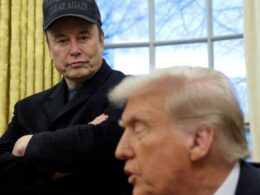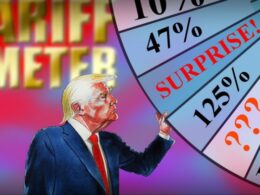Unlock the White House Watch newsletter for free
Your guide to what Trump’s second term means for Washington, business and the world
European capital markets have long been in the shadow of their US counterparts. This year, investors are suddenly seeing the continent in a much brighter light. Policy developments are piquing their interest. The EU’s plans to boost defence expenditure, Germany’s “debt brake” reform — which unlocks billions of euros in investment in the bloc’s largest economy — and broader initiatives to boost regional competitiveness, based on former European Central Bank president Mario Draghi’s recommendations, have generated optimism.
Donald Trump’s unpredictable policy agenda has also tilted portfolio allocations in Europe’s favour. His renewed attacks on US Federal Reserve chair Jay Powell dragged the S&P 500 further down this week. Indeed, even though the US president’s tariffs will hurt the continent’s exporters, Europe is still outperforming America across several asset classes this year.
With the rare spotlight it has among financiers, the EU has an opportunity to attract further capital and raise its global economic stature. But if it fails to move quickly and boldly to remove impediments to investment and economic growth, it risks squandering the moment. Investors are a fickle lot. Confidence can evaporate just as rapidly as it has returned.
As the ECB cut interest rates to 2.25 per cent on Thursday, it warned that Trump’s tariffs and global economic uncertainty risked weakening the already sluggish Eurozone economy. The German coalition agreement — unveiled by incoming chancellor Friedrich Merz last week — also disappointed economists for its lack of ambitious structural reforms.
What does the EU need to do? First, it must implement measures to boost fiscal space and funding for defence spending, as outlined in its Readiness 2030 plan last month. Then, as the expenditure takes place, policymakers should ensure that ample cash goes towards military innovation and research, where the potential economic spillovers beyond the defence sector are greater. The option of joint debt issuance, to raise investment capacity for security and beyond, should also remain on the table.
Second, while the EU’s negotiations with the White House over Trump’s “reciprocal” tariffs plans will take precedence, the bloc must not overlook the broader economic prize of embedding itself even more deeply into the global trading system, particularly as other regions seek to offset US protectionism. This means quickly ratifying its agreement with Mercosur, accelerating trade discussions with India and the UK, and maintaining open channels with Beijing to ensure its products do not flood the continent’s markets.
Third, progress in enacting Draghi’s blueprint for raising potential growth is even more pressing now, given the US trade shock. Initiatives to align national rules and regulations so that capital markets, banks and businesses can reap the benefits of scale are key. For measure, the IMF estimates that intra-EU trade barriers could be equivalent to an average tariff of 44 per cent on goods, and 110 per cent on services.
There is growing agreement among policymakers on what the EU must do to boost its economic and security prospects. The difficulty has often been in garnering political consensus, and impetus to execute its plans. Corralling 27 member states will remain a challenge. But Trump’s agenda — which has driven turmoil in trade and financial markets — ought to focus the minds given the dual threat and opportunity it poses for all EU nations.
Capital is returning to Europe. The euro is at its strongest against the US dollar in three years. And in the four weeks to early March, regional equity funds attracted their highest inflows in close to a decade. European policymakers must now give investors a reason to stay.
Source link









